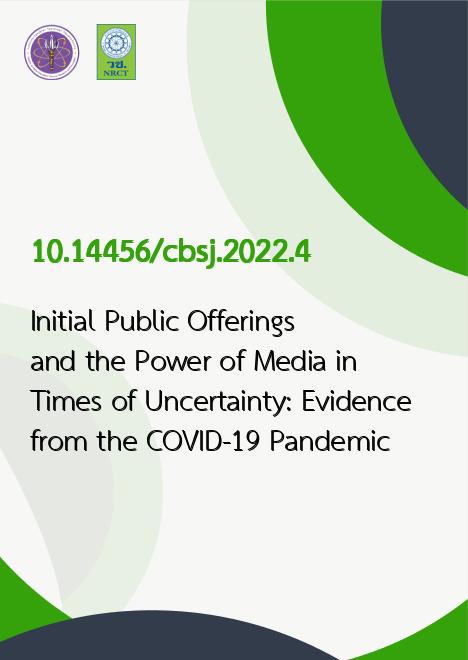
|
Initial Public Offerings and the Power of Media in Times of Uncertainty: Evidence from the COVID-19 Pandemic |
|---|---|
| รหัสดีโอไอ | |
| Creator | Ra-Pee Pattanapanyasat |
| Title | Initial Public Offerings and the Power of Media in Times of Uncertainty: Evidence from the COVID-19 Pandemic |
| Contributor | Aim-orn Jaikengkit |
| Publisher | Chulalongkorn Business school, Chulalongkorn University. |
| Publication Year | 2565 |
| Journal Title | Creative Business and Sustainability Journal |
| Journal Vol. | 44 |
| Journal No. | 1 |
| Page no. | 61-82 |
| Keyword | Knowledge Management Practices, IT Professionals, Cooperation-based Analysis and Conflict-based Analysis, Qualitative Research Approach |
| URL Website | https://cbsreview.cbs.chula.ac.th; https://so01.tci-thaijo.org/index.php/CBSReview/index |
| Website title | THAIJO; Creative Business and Sustainability Journal |
| ISSN | 2821-9236 |
| Abstract | The present study investigates whether the Coronavirus disease 2019 (COVID-19) pandemic has influenced the degree of online media coverage on initial public offering (IPO) firms in Thailand and moderates the relation between media coverage and IPO outcomes. Empirical evidence indicates that media coverage affects the initial returns of firms going public in the pre-pandemic period. The COVID-19 pandemic has heightened the level of global uncertainty, and it is expected to alter the role of online media outlets in stimulating equity offering activities. Using regression analysis, this study demonstrates an increase in the coverage on IPO firms by Facebook, Twitter, and news websites during the pandemic. Greater online media coverage leads to higher first-day initial returns, which is evidence of boosting investors' attention. However, the pandemic has had no significant impact on the relation between media coverage and IPO outcomes. These results provide insight into how the uncertainty from the pandemic induces changes to media coverage and how online media channels can be utilized to raise the visibility of IPO firms in emerging economies, with the study potentially having timely implications for academics, regulators, and practitioners. |